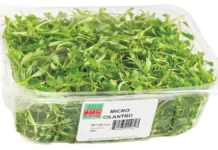Imagine this—You are seated at an upscale restaurant with one of your best clients and then handed a wine list thicker than a college textbook. You want to pick out the “perfect” wine to impress your client but everything looks like it is written in a foreign language. After only a few minutes the server asks if you have made your selection so you decide to order the most familiar thing on the menu.
You are not sure your selection will coordinate with your meals and it costs more than your boss will tolerate for a client dinner. By the time the bottle arrives you have broken out in a cold sweat and are ready to take a big gulp! The good news is that understanding the three main ways a wine list is organized is the first step to preventing this from ever happening to YOU.
There are three primary types of wine lists: those organized by the grape varietal, by geography or where it is made, and by flavor profile. Keep in mind that some lists blend several of these methods. Let’s explore each of these three types of wine lists:
1. By Grape Varietal. Organized by the main grape variety used to produce the wine, this type of list may be further organized by country or state. Thinking of the grape varietal first and the origin second is an American trend. Many European countries are trying to focus on the grape varieties despite regulations that ban the top rated wine from listing them on the label. Sections for the popular varietals, e.g., Chardonnay, Sauvignon Blanc, Pinot Noir, Cabernet Sauvignon, are usually listed, as well as an “other varietals” category for white and red. These lesser known varietal sections can often be more interesting, and is where many bargains can be found!
2. By Geography. This wine list is organized by countries of origin and often has the more specific subcategories, like the regions or state, which is the traditional type of wine list. If you love French wines, this type of list makes it easy. Flip to the French section and then look at what regions or wines are offered. The grape varietal used may (or may not) be listed next to the wines in this type of list. This is not an issue for most wines from the US since the wine is usually labeled by grape varietal, e.g., Chardonnay or Pinot Noir. The European wine industry, however, tends to focus on the region and assume we know what grapes are grown. Even though the principal grapes of Burgundy are Chardonnay and Pinot Noir, they won’t appear on the bottles of Burgundy’s finest wines.
3. Progressive. This type of list is a relatively new approach that is organized by the flavor profile. A typical category might be fruity whites or powerful reds and the wines in that category may be ordered from mildest to fullest. This allows diners to look for the type of wine they enjoy and then order options in the same flavor category. Your favorite grapes or countries may be located in many different categories. Once you get the hang of these lists, they are tons of fun. They don’t require any special knowledge of geography or grapes—just a knowledge what you like.
Now you should have a better understanding of the three most common ways that restaurants organize their lists. The geographic and grape varietal lists will account for 80% of the lists encountered, but the progressive list may be a growing trend. The next time you take an important client (or that special someone) to dinner they will be impressed with your ability to find the right wine in no time!
More Secrets to Ordering a Great Bottle of Wine Every Time!
• Do Your Homework: The first step to ordering a great bottle happens before you arrive at the restaurant. See if the wine lists are online. If so, you can get an idea of what they offer and do a bit of research. If not, you may want time after you are seated to digest the wine list and narrow down your choices. The easiest way to do this is to order sparkling wine to begin. Italian Prosecco or Spanish Cava are usually my choices since they’re tasty, affordable and pair nicely with most appetizers.
• Speak Up: Ask the sommelier or server for suggestions. Most are eager to help and have tasted most (if not all) of the wines on their list. Those of us who have chosen wine as a career enjoy drinking wine every night but don’t necessarily have large budgets. Sommeliers and servers will know the best bargains because that is what we are drinking at home!
• Don’t Break the Bank: If you are on a budget but don’t want the client to know that, point out a wine in your price range and then ask for an alternate suggestion. Any good server will recommend something within $10 of the wine you pointed out. Don’t go for the least expensive bottle, however; look for the second or third level wines. The lowest priced wines are actually marked up the most, sometimes 4 or 5 times cost, whereas higher priced wines might only be marked up 2 times cost.
• Get the Point: Let’s face it, we are not experts in French, Spanish or Italian but that doesn’t stop us from enjoying the wine right? If you find a great wine you want to order but are afraid to pronounce it, look for the Bin Number listed to the left of the wine. Many restaurants use these as a method to organize their wine inventory. If the list does not list bin numbers, then point to the wine in question and any astute server will get the message.
• Hidden Gems: Resist the temptation to order the cult favorites like Opus One or other highly sought after wines with name recognition. These wines are expensive because, like Gucci or Cartier, the brand’s status is part of what you are paying for. Many times you can find wines that are similar in quality for much less, especially if you are willing to try lesser known grape varietals or regions. Ask your sommelier or server. They will be able to recommend the best buys.
• Keep on Sipping: Try to taste as much as you can at home or at free in-store tastings. Retail wines are usually only marked up 30-50% over cost as opposed to the standard 2-3 times markup at a restaurant. Experimenting at home will give you the experience to order great wine you’ll love when you are out!























